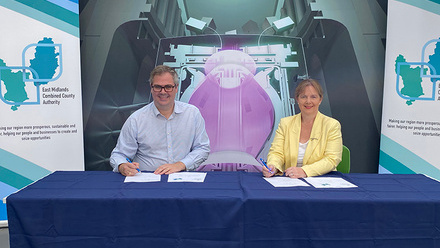Navigating commercialisation
Managing Associate Simon Portman of Marks & Clerk Law LLP explores the different routes to commercialisation.

Once a company has developed its product or technology and is ready for commercial roll-out, there are various ways of doing this. The company may be interfacing and contracting with end-users directly, or it may be selling through intermediaries through a variety of means.
Using intermediaries is common where the company does not itself have the resources or expertise to service its market to a significant level, or if it wishes to penetrate the potential market in countries or customer categories with which it is unfamiliar. Of course, selling through intermediaries is advantageous because it can, if the contracts give it the requisite protection, buffer the company from liability to the ultimate user or offload on another party the need to comply with import requirements and local regulations in overseas markets. But, in delegating this responsibility, one will also be relinquishing control and sharing the profits with other parties, so it is not necessarily always the best option.
Direct sales to end-users
In this scenario, the company manufactures and sells the goods itself. It gets to keep all the income, minus maybe carriage and insurance, but it could charge the customer for these too, depending on the arrangement. The downside is that the company, as direct seller, will be liable to the customer for late delivery or defective products. It could also be exposed if not paid on time.
The company will therefore need to limit its liability carefully under the contract and ensure payment upfront to the maximum extent possible. At the very least, it should reserve the right to suspend further supply if not paid.
Working with contract manufacturers
Even if the company sells to customers, the products may be manufactured by a third party or more than one party. This will mean entering into a manufacturing agreement which provides that:
- The parties adopt and adhere to agreed quality assurance and quality control procedures.
- The manufacturer accepts liability for late delivery and defective products so that the company has back-to-back protection in its agreement with the customer.
- The manufacturer only uses the company’s intellectual property to manufacture those products for the customer.
- If the manufacturer comes up with any improvements to the products – for example, a new manufacturing process or a scaled-up version of an existing process – the company will obtain access to (and ideally ownership of) these.
Appointing an agent
Sometimes, the company may need help accessing a particular market and could appoint an agent to assist with this. Title in the goods never passes to the agent. Instead, the agent goes out and secures customers for the company and may also negotiate contracts with customers on the company’s behalf. Usually, agents are paid commission calculated as a percentage of revenue derived from sales that they have secured.
Two things to look out for with agency agreements are:
- As the agent is essentially a mouthpiece of the company, the company will be liable for anything that it does in that capacity, so there will need to be close control exerted in the contract.
- In some countries, agents are entitled to compensation if the agreement terminates and this right cannot necessarily be excluded, so legal advice on this point should always be sought.
Appointing a distributor
In this scenario, the company appoints a reseller who buys the products from them and then resells them at a higher price in its own name. Sometimes, they may be built into an end-product under an original equipment manufacturer arrangement. If this option is taken:
- The company will want the distributor to be solely liable under its resale contract with the customer.
- But the distributor will want protection if it incurs liability because of a problem with the goods that arose before it bought them from the company.
- So, liability under the distribution agreement will need allocating between the parties carefully.
Granting a licence
In this scenario, the company is most removed. It grants the licensee a right to make and sell the products in its own name so that the customer may not even know who the original owner is. The licensee may even take over paying for, and protecting, the licensed intellectual property. In return, the company, as licensor, is usually paid a royalty.
What’s the best way forward?
Determining the best option will depend on the company’s capabilities and the markets it operates in. Different options may make sense depending on the business’ development. However, input from its commercial, legal and marketing team, as well as tax advisors and underwriters, will be crucial if it is to derive the maximum benefit from whichever route it takes.







